The Anthropology of Western Religions
The Anthropology of
Western Religions
Ideas, Organizations, and Constituencies
Murray J. Leaf
LEXINGTON BOOKS
Lanham Boulder New York London
Published by Lexington Books
A wholly owned subsidiary of Rowman & Littlefield
4501 Forbes Boulevard, Suite 200, Lanham, Maryland 20706
www.rowman.com
10 Thornbury Road, Plymouth PL6 7PP, United Kingdom
Copyright 2014 by Lexington Books
All rights reserved. No part of this book may be reproduced in any form or by any electronic or mechanical means, including information storage and retrieval systems, without written permission from the publisher, except by a reviewer who may quote passages in a review.
British Library Cataloguing in Publication Information Available
Library of Congress Cataloging-in-Publication Data
Leaf, Murray J.
The anthropology of Western religions : ideas, organizations, and constituencies / Murray J. Leaf.
pages cm
Includes bibliographical references and index.
ISBN 978-0-7391-9238-2 (cloth) -- ISBN 978-0-7391-9239-9 (electronic) 1. Religions. I. Title.
BL80.3.L43 2014
306.6--dc23
2014007858
 TM The paper used in this publication meets the minimum requirements of American National Standard for Information Sciences Permanence of Paper for Printed Library Materials, ANSI/NISO Z39.48-1992.
TM The paper used in this publication meets the minimum requirements of American National Standard for Information Sciences Permanence of Paper for Printed Library Materials, ANSI/NISO Z39.48-1992.
Printed in the United States of America
List of Illustrations
Preface
This is one of two volumes. Together they make up a comparative ethnography of the worlds great religions, focusing on the relationships between their main ideas, their organizations and their roles in history and world affairs. It is not an argument in favor of or against any one religion, or religion in general. As an anthropologist, my interest in this particular type of human activity is no different from what it would be for any other. The basic questions are always, What are they doing, how are they doing it, and why?
The description has six features that are different from what we usually see in basic surveys of the world religions. The first is that it is thoroughly empirical. It is therefore also humanistic. I do not claim to describe or know about things beyond human experience.
Second, I do not start with a definition of religion, nor is my aim to arrive at one in conclusion. One reason is that we do not need one. The major traditions have identified each other. The other reason is that such a definition would be distorting. We can see that each of the recognized religions has its own idea of what religion is in general, and these ideas are not the same. Yet they all function in the same way. They act like built-in mission statements. They are the way the tradition defines what it should be doing in general, and against this the tradition then further describes itself as a way, or the way, to do it. It follows that imposing a general idea of religion on a tradition that is alien to its own general idea of religion is the same as imposing an alien purpose or standard of performance on it. It automatically devalues their own purposes and distorts their ways of accomplishing them.
The third feature is that it recognizes that these worldwide religious traditions have important similarities to a number of other worldwide traditions that we similarly associate with higher society or civilization, including government, law, military organizations, business, scholarly and scientific professions, and formal education.
The fourth feature is that it emphasizes the interpretation of foundational texts and textual materials, rather than beliefs. There are several reasons, but the main one is that this is also the focus of the religious professionals.
The fifth is its focus on organizations, which are built from the ideas drawn from the texts and stabilized by the texts.
The sixth feature is its focus on purposes and strategies. This includes the purposes of the concerned officers and organizations and the main purposes that bring adherents or supporters to these officers and organizations.
Taken together, these features let us see religion in its cultural entirety from production to application and back to production. This in turn lets us understand it on an even footing with other traditions and organizations of similar prominence.
Murray J.Leaf
University of Texas, Dallas
Acknowledgments
The major world religions, east and west, all depend on the interpretations of texts by trained professionals. The meaning of a text is partly a matter of what is on the page that anyone might see, but also a matter of what its interpreters assume and intend. Getting a sense of this personal and social side of a tradition involves ethnography. It involves talking to people. I have done so with every tradition I describe here, although of course not every subdivision. This has involved far too many personal encounters to acknowledge comprehensively, but it is a pleasure to recognize the most prominent.
My understanding of Judaism has been strongly influenced by my early associations with Rabbi Marcus Breger and my uncle, Robert Kissel, both now deceased. Mr. Kissel was a founder of the Conservative congregation in Tucson, Arizona, where I grew up. Later, when he had moved to Los Angeles, if I happened to visit him over a Saturday morning he would regularly invite me to accompany him to a synagogue. Oddly, it was never the same one twice. Dr. Breger was a rabbi of the Tucson Conservative congregation and then was a founder of the Religious Studies program at the University of Arizona. Before that, he had been professor in the illustrious but ill-fated Rabbinical College of Rhodes under the Ottomans, fled to America to escape Nazism, and served as a U.S. Army chaplain in the Pacific in World War II,
My description of Christianity reflects more conversations with priests, ministers, teachers, adherents and former adherents over the years than I can begin to describe, but I am especially grateful to Ernest Brandewie for discussions of Catholic priestly training and Bobby Alexander, at the University of Texas at Dallas, for critically reviewing my description of Protestantism. For advice on Unitarian Universalism and Arian influences I thank John Hart and Reverend Patrick Price.
My sense of Islam has been built up from written sources, personal experience in India and Bangladesh, and many asylum and immigration cases I have been involved in with Muslim clients from India, Pakistan, and Bangladesh. But I must especially thank Fadwa Al Guindi and Ahmad Khaikus for their help in confirming and adjusting my sense of internal sectarian dynamics.
I thank Poras Balsara for guidance on Zoroastrian ideas. Marie Chevrier has provided the photograph of the Bahai Temple in New Delhi (Figure 5.3). The other photographs are by me. Michelina Leaf and Alisha Kim provided editorial suggestions. Phan Thi Cam Anh provided research assistance.
Very importantly, I thank my students over the past thirty years who urged me to write this and whose many discussions, reactions, and class papers inform it.
Chapter 1
Introduction
Human societies are pluralistic. They have institutions of several different kinds: religions, governments, formal education, economies, militaries, sciences, the learned professions, families, and kinship organizations. These are not mutually compatible; they do not combine into some larger integrated whole. Moreover, in every place inhabited by a few thousand people or more, some of these institutions are unique to that place or nearly so and some may be worldwide. My concern here is with what are often called the great religions, all of which are now either worldwide or nearly so. They are also described as organized religions (although there are other organized religions not so widely distributed). These religions can be found in many different communities around the world, and in those communities they are juxtaposed to each other and to many other institutions of other kinds. The two major questions I address are What are they? and What effects do they have?
Next page
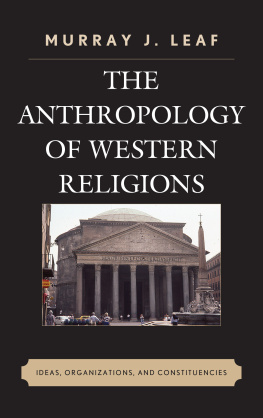

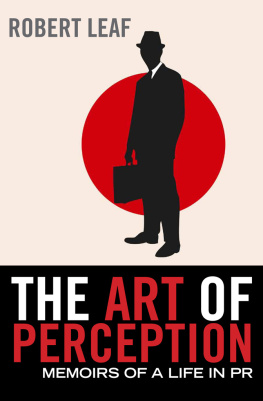




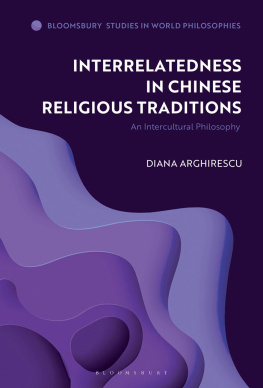
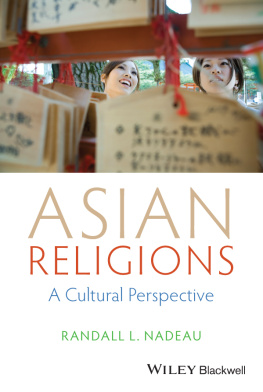
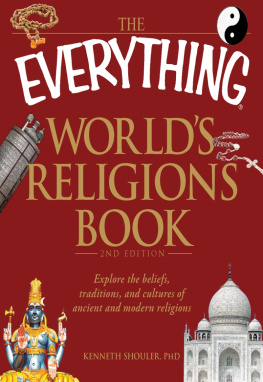
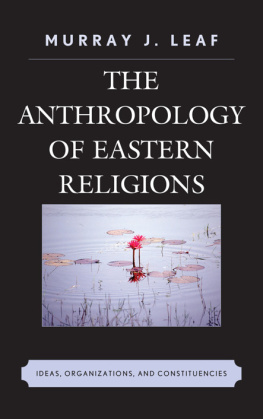
 TM The paper used in this publication meets the minimum requirements of American National Standard for Information Sciences Permanence of Paper for Printed Library Materials, ANSI/NISO Z39.48-1992.
TM The paper used in this publication meets the minimum requirements of American National Standard for Information Sciences Permanence of Paper for Printed Library Materials, ANSI/NISO Z39.48-1992.